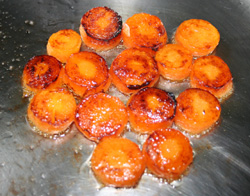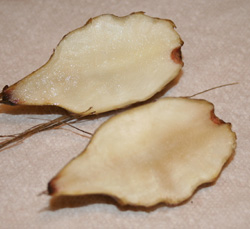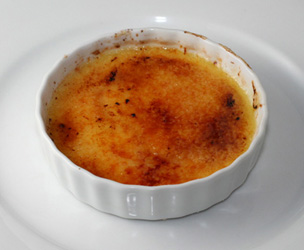The Maillard reaction is a chemical reaction between an amino acid and a reducing sugar, usually requiring the addition of heat. Like caramelization, it is a form of non-enzymatic browning. The reactive carbonyl group of the sugar interacts with the nucleophilic amino group of the amino acid, and interesting but poorly characterized odour and flavour molecules result. This process accelerates in an alkaline environment because the amino groups do not neutralize. This reaction is the basis of the flavouring industry, since the type of amino acid determines the resulting flavour. In the process, hundreds of different flavour compounds are created. These compounds in turn break down to form yet more new flavour compounds, and so on. Each type of food has a very distinctive set of flavour compounds that are formed during the Maillard reaction. It is these same compounds that flavour scientists have used over the years to create artificial flavours.

Non-enzymatic browning -- the result of the Maillard reaction and Caramelization of carrots.
ENZYMATIC BROWING
Enzymatic browning takes place when the enzyme polyphenol oxidase or other enzymes catalyze the oxidation of phenols in the fruit to form compounds called quinones. The quinones can then polymerize to form melanins, which cause the brown pigments
Enzymatic browning of fruits and vegetables is usually not desirable and creates heavy economic losses for growers.
Enzymatic browning is beneficial for:
Developing flavor in tea (here the reaction is incorrectly called fermentation)
Developing color and flavor in dried fruit such as figs and raisins.
Enzymatic browning is detrimental to:
Fresh fruit and vegetables, in particular apples and potatoes
Seafood such as shrimp
Control of browning
Enzymatic browning is usually controlled with chemicals, or by destroying the responsible chemicals with heat. Blanching to destroy the enzymes is commonly used to preserve color in vegetables.
Lemon juice and other acids are used to preserve color in fruit, particularly apples, by lowering the pH and removing the copper site necessary for the enzyme to function.

After only 5 minutes sunchokes exposed to air begin to brown. (bottom image)
This can be controlled by applying an acid such as lemon juice (top image)
Ascorbic acid can inhibit browning reactions by reducing the quinones back to the original phenol compounds. In the presence of oxygen or metalions, the phenols can readily convert to quinones.
References:
